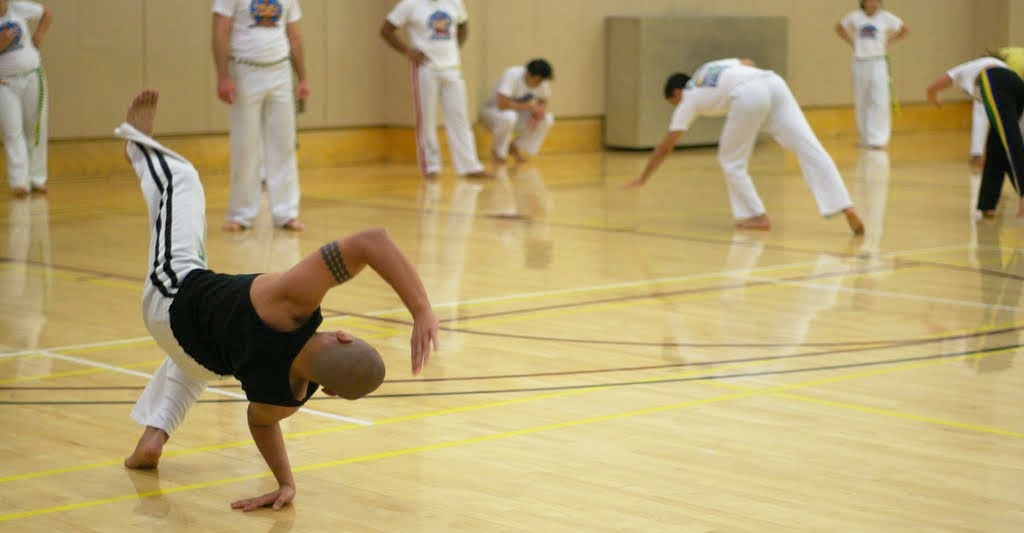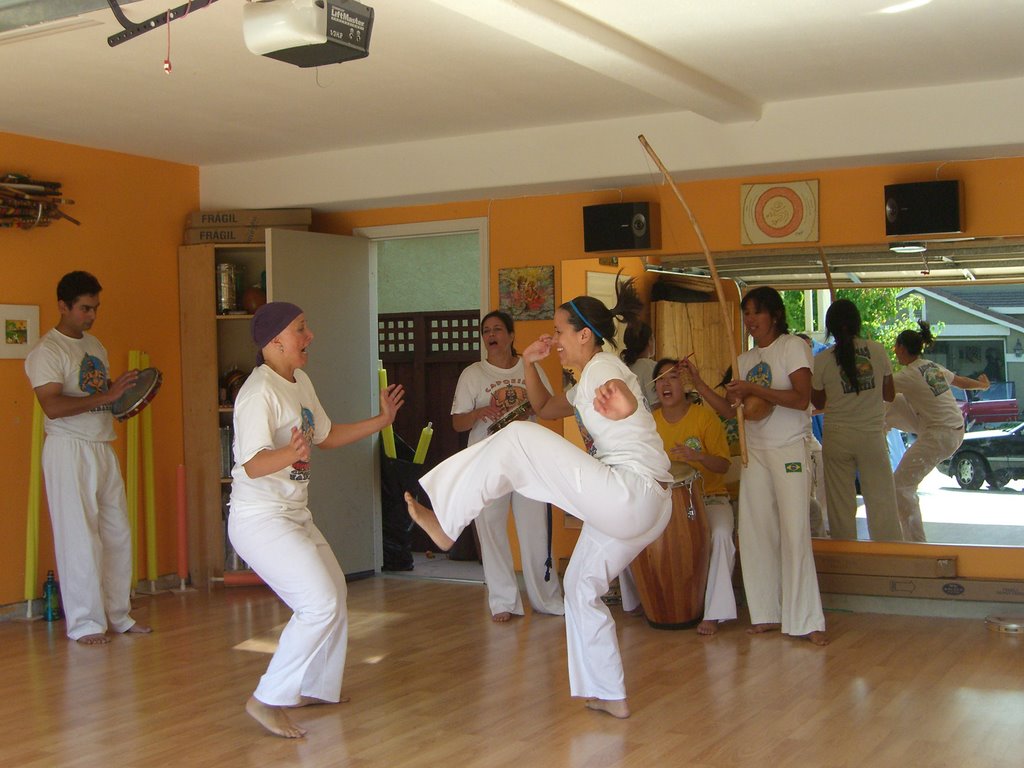Never too early to start stretching! Kids & Family Class - 2017
Today's post is about something we all know deep down but may not want to admit to ourselves. And then once we do, we may not really take it seriously enough until things get REALLY bad. What am I talking about? Pain and injuries, which are generally preventable. How?
Pay attention to your own body: inside and outside of it.
Injuries can be usually prevented by the following:
1. Start a training session with adequate warm-up
This can take 20-30 minutes! Get the blood flow going by a light jog, and other dynamic movements using all the appendages and slowly expand the range of motion. Roll out your ankles, knees, hips, elbows wrists. Capoeiristas really push the limits of their wrists and backs, more than other sports. It's wise to activate the right muscles by doing lots of abdominal training as well - crunches, planches, cherry-pickers, supermans, leg lifts, and even push-ups.
Check out the first 8 minutes of this video of a soccer team warming up. They start slow, incorporate their arms, and using different movement patterns. Then they stretch while moving across the field.
2. Stretch regularly, especially after a workout
Make sure to target all the major muscle groups starting from the toes up. Stretch those calves, hamstrings, quads, hip flexors, and glutes. Then go for those arms - triceps, biceps, neck at various angles. Top it off with some cat stretches for the lower back. This is the very minimum. Stretch even on off-days, after a light warm-up. Foam roll, too. Stretching after a workout prevents muscle stiffness and the associated pain.
I have to confess that I am not the most disciplined stretcher and my new year's resolution is to stretch more post-workout and in between workouts. Over the years however, my kicks have gotten higher and range of motion has improved, thanks to the minimual stretching I have done. This also means while training kicks, consistently pushing to the limits of the range of motion. It all adds up over time!
3. Pay attention to sharp pain signals
STOP when they happen. (This is not to be confused with the "burn" of a workout, which sorry, is supposed to hurt a bit.) Athletes tend to be strong of mind and push through pain, and it's hard to know which is "good pain". Ask your trainer if you can't tell the difference.
4. Pay attention to your environment
While playing with a partner in a capoeira roda, you can only control yourself, and in the beginning, not that well! So when playing with a second person, especially a beginner, there is a higher risk of accidental injury. Be conscious of the location of all of your limbs and those of your partner! This also means controlling the DIRECTION and TIMING of your kicks. It seems obvious but EVERYONE at some point experiences the repercussions of not paying attention and a lesson is learned forever onward...if you get what I'm saying.
So that's the simplest and most difficult thing to do - but if you can manage it, you'll be thankful. Of course, to add to these tips, as we all know, it doesn't hurt to repeat - STAY HYDRATED. It's critical to muscle health. And while you're at it, keep your salt balance in check. Easy peasy. Thanks for reading and I hope you can join us at Hyper Active Monkey Fitness at 8pm and all Mondays until Dec 18, 2017. Hope to see you there!
Let's get moving!
-Megha Makam













